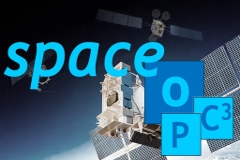
Satellite hyperspectral sensors are instruments that produce very high-volume images. The several hundred spectral channels provide a very detailed perspective of the observed objects. These sensors have many applications ranging from environmental mapping to object recognition (defense/security applications). The problem in this specific industry/market has to do with the technical limitations presented by the satellites. This is because satellites have limited bandwidth transmission rates and limited storage and in-flight processing capabilities. These constraints result in either a reduction in the frequency of acquisition or a reduction in the spectral resolution of the acquired images. Also, given that there is no knowledge about cloud cover, many images may contain a high percentage of cloud cover, making them essentially useless.
Within the framework of this innovation project, Planetek Hellas is developing a solution aimed at overcoming the aforementioned technical limitations. As part of this project, we are creating a series of standardized products for electronic and embedded image management systems, based on Planetek's patented methods for the compression and decompression of spectral data (Patent registration number: 3347852). These products, which make up the OP3C series (Onboard Compression and Cloud Classification), are provided as in-flight software and hardware, are installed on satellites equipped with hyperspectral sensors, and offer compression of the received data with a compression ratio of 12-22 as well as classification of cloud cover in this data.
The project is funded by the European Union, the European Regional Development Fund, EPAnEK 2014-2020, the Operational Program Competitiveness, Innovation, and Entrepreneurship, the General Secretariat for Research and Innovation, and ESPA 2014-2020, development - work - solidarity.
The solution
OP3C (On-board Processing for Compression and Clouds Classification) compression technique achieves high compression ratios, low data distortion, still keeping a limited computation complexity suitable to the on-board constraints.
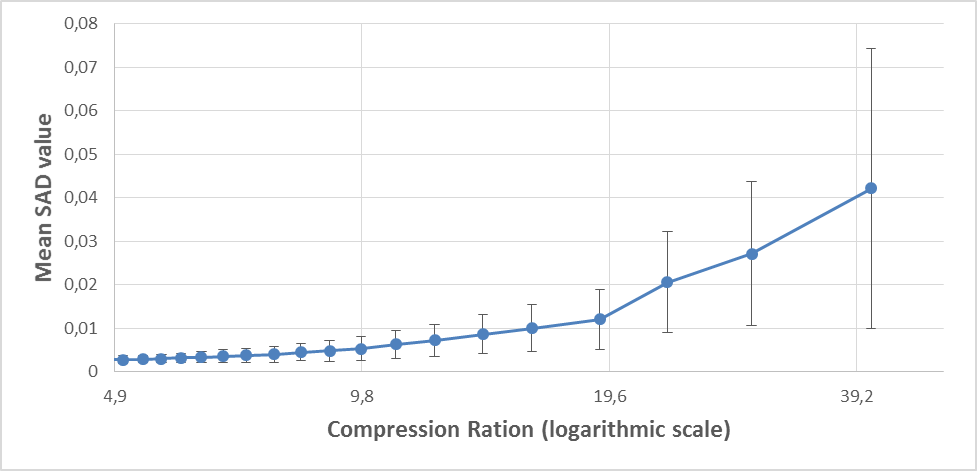 OP3C compressed data can be further processed in their compressed form. This is a typical characteristic of the class of techniques known as compressed sensing.
OP3C compressed data can be further processed in their compressed form. This is a typical characteristic of the class of techniques known as compressed sensing.
The OP3C compression methodology is named HUNPCA (Hybrid Un-mixing Principal Component Analysis) and is based on a spectral un-mixing procedure and PCA combined with a coding algorithm. An international patent is pending (PCT/EP2015/070628) on behalf of Planetek Hellas.
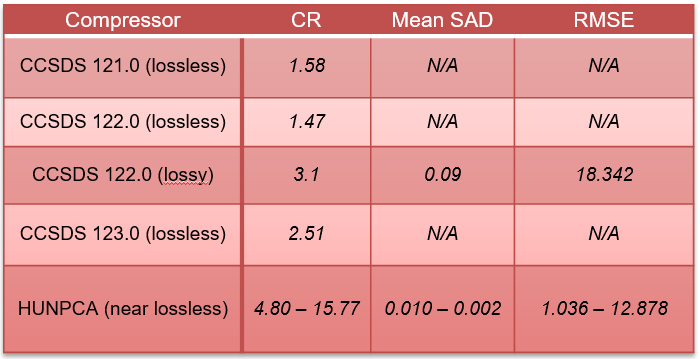 OP3C can consider the cloud coverage, both at pixel level and as overall coverage percentage, in order to dynamically adapt compression to image content.
OP3C can consider the cloud coverage, both at pixel level and as overall coverage percentage, in order to dynamically adapt compression to image content.
The performances of the OP3C compressor have been demonstrated on two different sensors: AVIRIS (airborne) and Hyperion (spaceborne) on the standard dataset (Aaron et al. 2009) adopted by NASA and CCSDS for hyper-spectral compressor benchmarking.
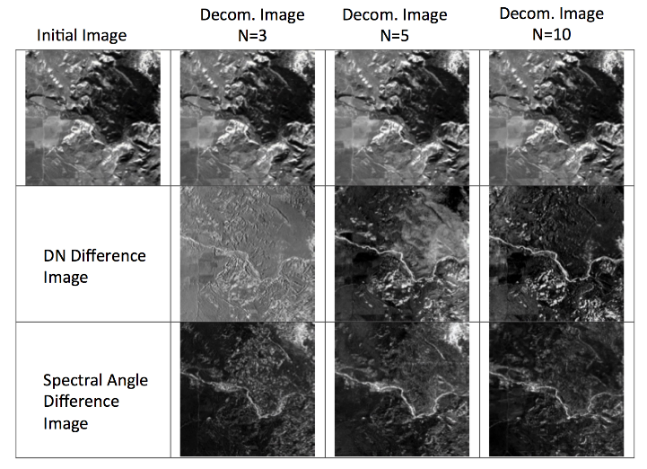 The HUNPCA compression algorithm has been evaluated in terms of data loss according to the similarity metric Spectral Angle Difference (SAD) and the Root Mean Square Error (RMSE). Its performance is compared with the CCSDS 121.0, 122.0 and 123.0 compressors.
The HUNPCA compression algorithm has been evaluated in terms of data loss according to the similarity metric Spectral Angle Difference (SAD) and the Root Mean Square Error (RMSE). Its performance is compared with the CCSDS 121.0, 122.0 and 123.0 compressors.
The OP3C system is able to provide high compression ratios with minimal information losses and also allows to further process images directly in their compressed domain.
HUNPCA applicable sensors:
- Hyperspectral sensors
- Imaging spectrometers
- Sounding (infrared) imaging sensors
- Thermal hyperspectral imagers
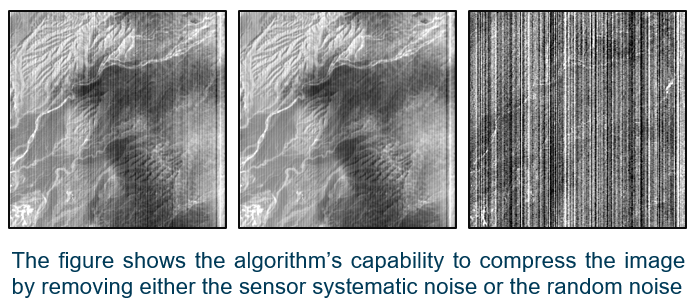 MAIN FEATURES:
MAIN FEATURES:
- achieves high compression ratios without significant information losses (estimated data volume reduction from 12 to 22 times)
- provides both near-lossless or lossy compression modes upon configuration
- performs de-noising of the hyper-spectral image bands
- adapts to sensor’s characteristics: the greater the spectral resolution, the higher the compression ratio.
- detects clouds and adapts compression. By applying the compression algorithm only to the land/sea pixels, the algorithm achieves higher variance description with the same threshold. This feature allows the algorithm to achieve higher compression ratios with better information modeling.
- the algorithm allows data processing in their compressed form, i.e. other processes / workflows can be applied without decompressing the image (e.g. useful for on board classification)
Download here the spaceOP3C Brochure (PDF)




